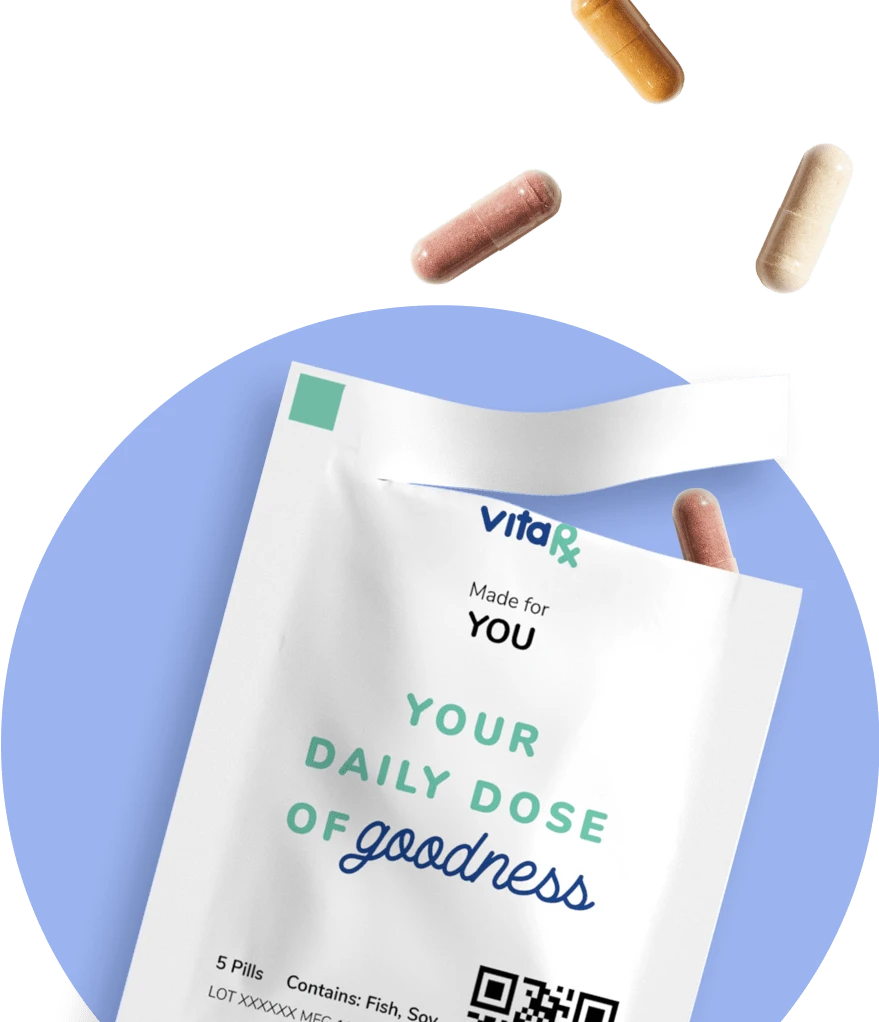Last update: July 2, 2025
7 minute read
Vitamin D in College Students: Why Deficiency Is a Growing Concern for Young Adults
Discover why vitamin D deficiency among college students is alarmingly high, its effects on health and academics, and practical ways to overcome it.

By Derick Rodriguez, Associate Editor
Edited by Dr. Dimitar Marinov, MD, RDN, PhD

Studies have found that up to 85% of sampled college students have below-optimal amounts of vitamin D, even though sunlight—the primary source—is often right outside their window.
What’s causing this unsettling paradox? Between study sessions, indoor classes, and Netflix marathons, students spend most daylight hours indoors, unintentionally limiting their body’s natural chance to produce vitamin D.
On top of that, dietary habits also play a role, and unless they’re regularly snacking on salmon or fortified dairy, many students are unknowingly facing nutritional gaps.
Wondering where vitamin D fits in your health routine? You can check out this guide on vitamin D's benefits for bone strength and immune defense for more details on this hidden health risk. Let’s dig into why.
Key takeaways
- Vitamin D deficiency is highly prevalent in college students, affecting roughly 60-70% of those examined in several studies
- Lack of vitamin D may increase the risk of weakened bones, compromised immune function, and mood disorders
- Students can combat deficiency through responsible sun exposure, diet, and quality supplements like those from VitaRx
Why sunlight isn’t enough
Now that we’ve mentioned sun exposure, you might also be wondering: if sunlight is the main source of vitamin D, why are college students still deficient?
In many cases, between classes, study sessions, and work, students often spend most daylight hours indoors, and when outside, may use sunscreen or wear clothing that limits sun absorption.
Recent research shows that up to 85% of students may have below-optimal vitamin D status, with 16.7% experiencing outright deficiency and an additional 68.3% showing insufficiency.
A separate study of American college students found 69.5% had sub-optimal serum levels, while only 8.2% met the recommended dietary allowance of 400 IU per day.
Typically, diets low in vitamin D-rich foods like fatty fish, egg yolks, or fortified dairy make it tough to meet those needs without supplements or significant sun exposure.
Vitamin D Status | Frequency | Proportion |
|---|---|---|
Vitamin D deficiency (<10 ng/dL) | 48 | 16.7% |
Vitamin D insufficiency (10–29 ng/dL) | 196 | 68.3% |
Normal (30–100 ng/dL) | 43 | 15% |
Only about 1 in 7 students hit healthy levels; the rest are insufficient or deficient.
Health implications
What makes this situation more concerning is the impact of vitamin D on overall well-being. Low vitamin D is linked to bone density loss and has been associated in some studies with fatigue, weakened immunity, and respiratory tract infections.
Some findings showed an inverse correlation between BMI and serum 25(OH)D levels, suggesting that students with higher BMI may need even more attention to vitamin D intake.
But wait—how does vitamin D status relate to BMI? Vitamin D gets stored in body fat, so people with higher BMI may “trap” more vitamin D in fat tissue, leading to lower circulating levels.
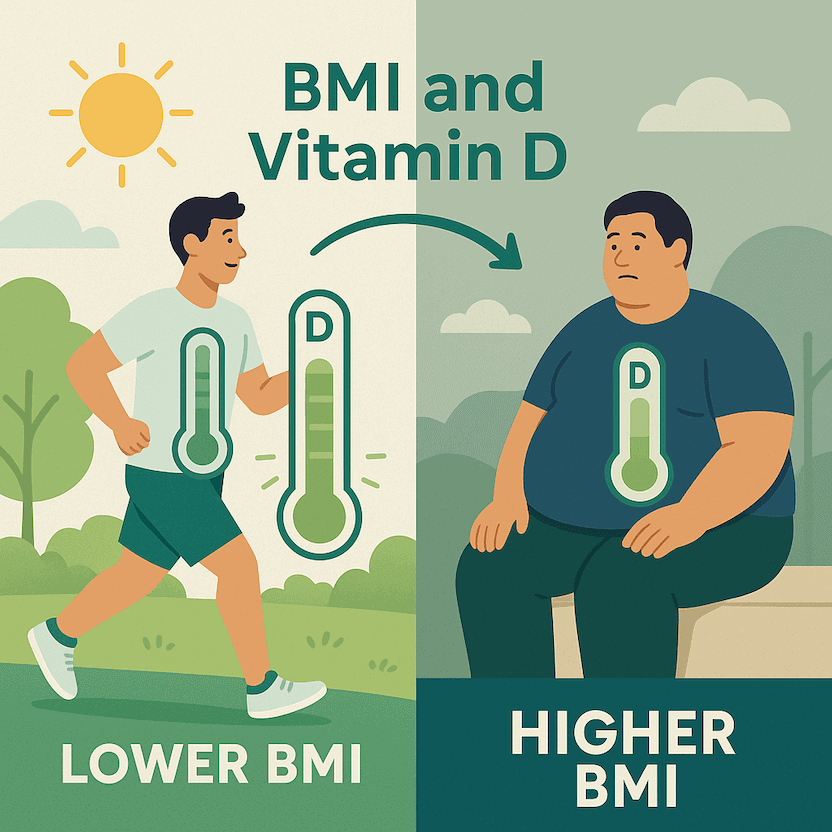
Vitamin D is important because it helps your body absorb calcium, the main building block of healthy bones. In severe cases, deficiency can cause symptoms like bone pain, muscle weakness, and increased likelihood of fractures.
For young adults, proactive vitamin D management is essential as risk factors include limited sun exposure, darker skin pigmentation, and dietary patterns low in fortified foods or fatty fish.
College students need more sunlight
Despite getting sunlight every day, college students are increasingly at risk for vitamin D deficiency, which some researchers describe as a widespread public-health concern, with important implications for both bone health and other chronic diseases. This is especially true for university and college students aged 18-29, many of whom don’t spend much time outdoors or may not get enough vitamin D through diet alone.
Darker skin increases the risk of vitamin D deficiency because more melanin means your skin blocks more UVB light, so it takes longer to produce vitamin D from sunlight compared to lighter skin.
— Dr. Dimitar Marinov, MD, RDN, PhDUp to 85% of students have suboptimal vitamin D, impacting bone health, immunity, and academics. This is largely due to indoor lifestyles and poor diets. Addressing this through sun, diet, and supplements is crucial for student well-being.
Current recommendations
Recommended Daily Allowance for vitamin D:
Age Group | Recommended Daily Allowance (IU) |
|---|---|
14-18 & 18-70 years | 600 |
70+ years | 800 |
Pregnant/Breastfeeding | 600 |
Note: The current recommendation is 600 IU, which reflects updated guidelines; older studies may reference 400 IU.
But wait—if the RDA is 600 IU, why did earlier studies use 400 IU? Older recommendations set the RDA at 400 IU, but newer research and updated guidelines now call for 600 IU daily for young adults.
Top risk factors
Key risk factors for low vitamin D in college students:
- Indoor lifestyle: Spending most hours indoors (classes, studying)
- Sunscreen use: Using sunscreen regularly or having limited skin exposure
- Diet: Diets low in fortified dairy products, fish, or vitamin D-rich foods
- Higher BMI & Minority status: Having a higher BMI or belonging to certain minority groups who tend to have lower average serum vitamin D levels
Think of it this way: if your college routine leaves you indoors most days and your meals rarely include fish or fortified milk, you’re likely missing out on key vitamin D sources.
VitaRx Tip
One small study reported that all minority college students in its sample had sub-optimal serum vitamin D levels. This highlights the need for targeted health education and possible dietary interventions for at-risk groups.
How to know if you’re deficient
Now that we’ve discussed at-risk populations, you might wonder how to tell if you are deficient. Mild viitamin D deficiency can often go unnoticed, but persistent fatigue, muscle aches, or frequent colds could be warning signs.
For those concerned about their status, blood tests can measure 25(OH)D levels. Many experts view levels below 20 ng/mL as deficient and 20–30 ng/mL as insufficient.
Some groups recommend aiming for at least 30 ng/mL, though consensus varies, with recommended daily intakes typically ranging from 600 to 800 IU, though those with low levels may need supplementation up to 2,000 IU under healthcare supervision.
However, we recommend consulting a healthcare provider before starting supplements, as vitamin D is fat-soluble and can build up in your body.
But wait—does “fat-soluble” mean vitamin D can be dangerous? Yes. While rare, excess vitamin D from supplements (not sunlight) can cause toxicity, leading to nausea, kidney issues, or high blood calcium.
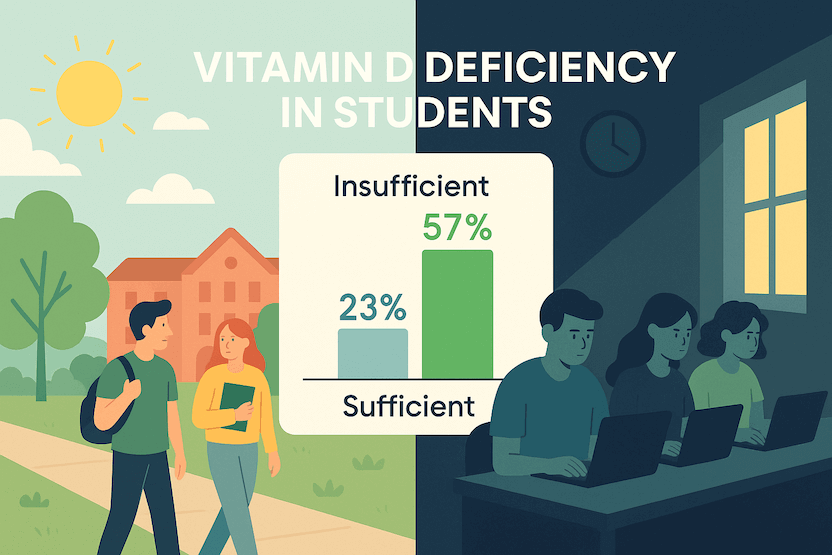
Simple ways to boost your levels
Increasing awareness and adopting preventive habits—like getting moderate, safe sun exposure, choosing vitamin D-rich foods, and seeking medical advice if you belong to higher-risk categories—will go a long way toward improving vitamin D status among college students.
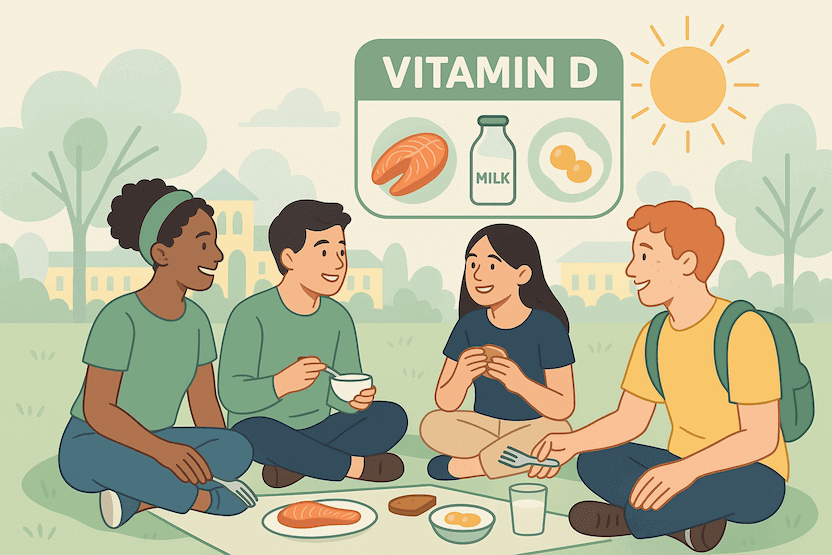
Still curious about vitamin D’s other roles? Here’s a quick list:
- Immune: Supports immune system health
- Mood & mind: May influence mood and cognitive function
- Chronic disease: Possible links to reduced risk for certain chronic illnesses, like diabetes and autoimmune disorders
Vitamin D's full potential
Vitamin D is also being widely studied for its potential role in immune function and even chronic disease prevention, beyond bone health. This evolving research underlines why vitamin D matters so much during the important college years and beyond.
Frequently asked questions (FAQ)
Here are some of the most frequently asked questions about vitamin D in college students.
Final thoughts
Vitamin D isn’t just another nutrient on your health checklist—it’s a cornerstone for strong bones, good immunity, and overall well-being, especially crucial during the important college years.
We don’t have to accept widespread student deficiency; proactive measures like mindful diet changes, intentional sun exposure, and targeted supplementation can make all the difference.
Ask yourself: Am I giving my body what it truly needs? Checking your vitamin D status may just change your health and academic performance in more ways than you'd imagine.
Sources and references
- Prevalence, Risk Factors, and the Association Between Vitamin D Deficiency and Episodes of Respiratory Tract Infections - PMC
- Vitamin D Status of College Students: Implications for Health Leaders - Journal of the Academy of Nutrition and Dietetics
- Vitamin D - Health Professional Fact Sheet
- Questions About Vitamin D for Primary Care Practice: Input From an NIH Conference - PubMed
- Vitamin D levels among children, adolescents, adults, and elders in Pakistani population: a cross-sectional study
Editor

Derick Rodriguez
Derick Rodriguez focuses on editing health and wellness-related content. With over half a decade of experience in the digital realm, Derick has developed a unique skill set that bridges the gap between complex health concepts and accessible, user-friendly communication. His approach is deeply rooted in leveraging personal experiences and insights to illuminate the nuances of health and wellness topics, making them more approachable and empowering readers with knowledge and confidence.
Fact checker

Dr. Dimitar Marinov
Dr. Marinov has years of experience in scientific research and preventive and clinical medicine. His publications in peer-reviewed journals are on nutritional status, physical activity, and musculoskeletal disorders among adolescents.
At VitaRx, we're not just passionate about our work — we take immense pride in it. Our dedicated team of writers diligently follows strict editorial standards, ensuring that every piece of content we publish is accurate, current, and highly valuable. We don't just strive for quality; we aim for excellence.
Related posts
While you're at it, here are some other relevant articles you might be interested in.
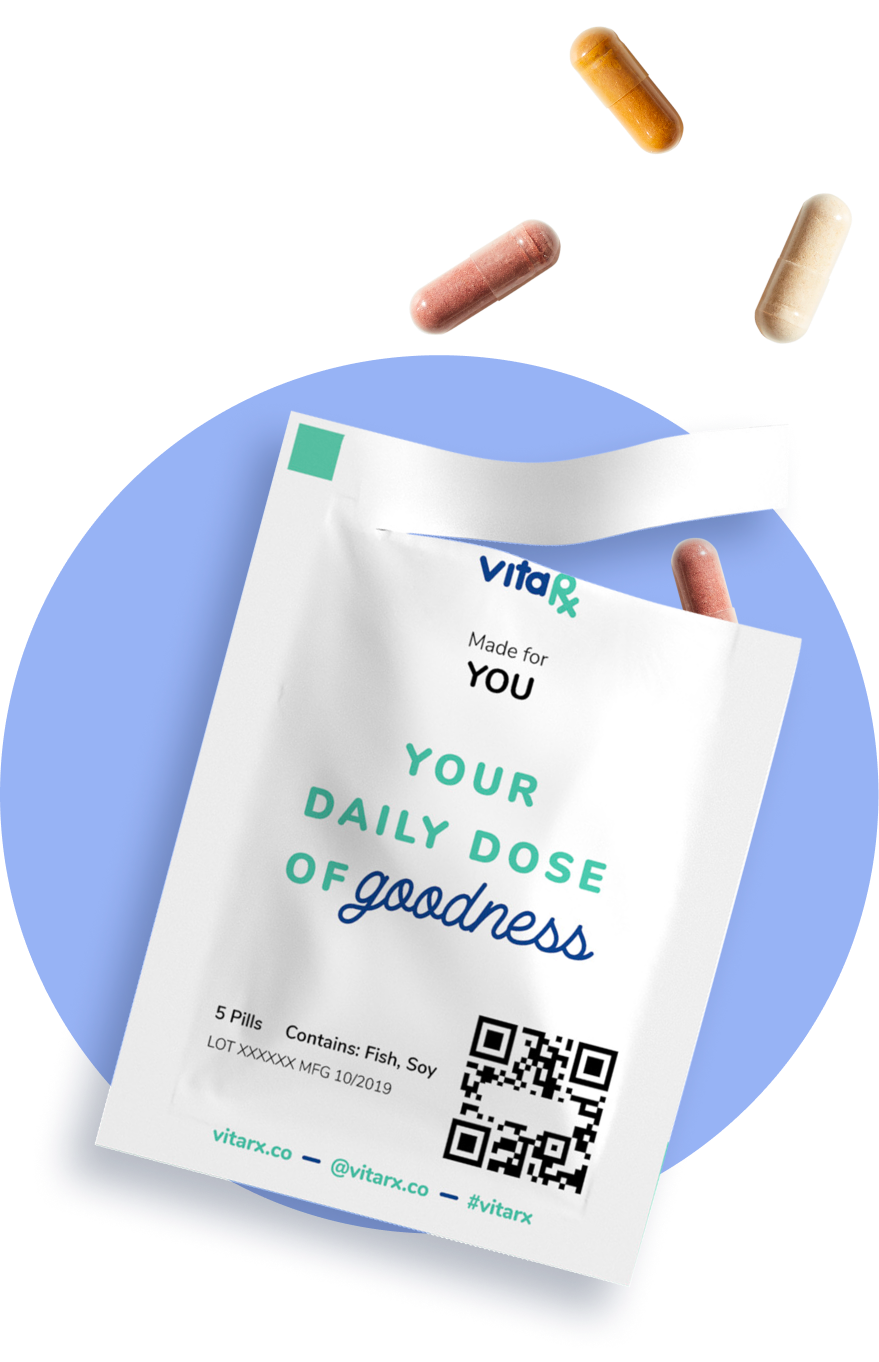
Get your personalized vitamin recommendations in less than
5 minutes.
Get your personalized vitamin recommendations in less than
5 minutes.
